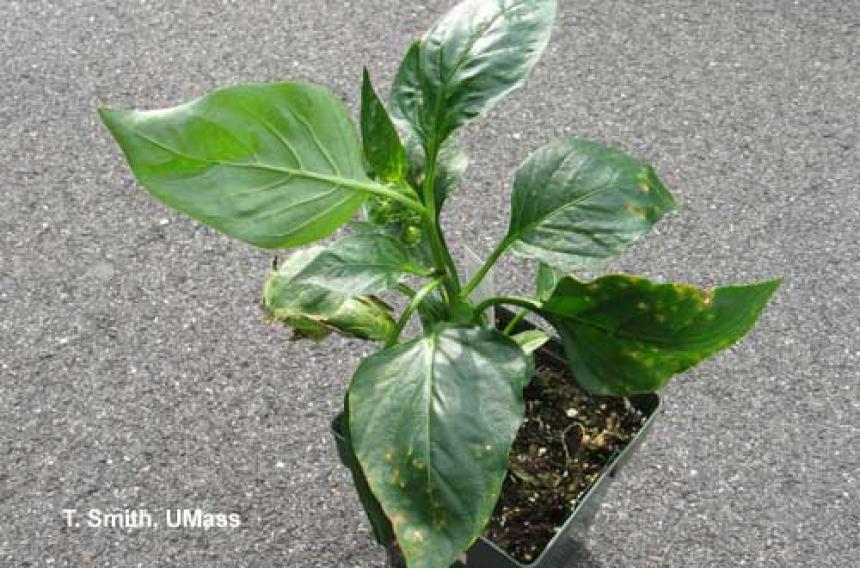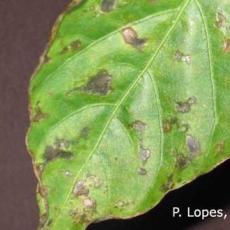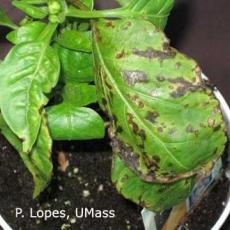Bacterial leaf spot of pepper caused by Xanthomonas campestris pv.vesicatoria is the most common and destructive disease of peppers in the Northeast. Different strains or races of the bacterium are cultivar specific, causing disease symptoms in certain varieties only. The bacterium is carried within seed, or in solanaceous weeds and crop debris. Tomatoes are also susceptible. Disease development is favored by high nighttime temperatures and high moisture and may be arrested during prolonged dry spells. Bacteria spread from plant to plant by splashing water, blown by high pressure sprayers, or on workers hands and equipment. Resistant varieties offer the best protection against this disease. Start with certified disease free seed or treat seed with hot water or dilute solutions of bleach. Grow transplants in a clean, disinfected greenhouse, do not set infected transplants into the field, rotate crops, control solanaceous weeds, rogue infected plants, and minimize leaf wetness periods by proper irrigation practices and plant spacing. Streptomycin can be applied before transplant. Maintain adequate fertility, especially nitrogen in the field and apply copper bactericides at a 7-10 day schedule as soon as disease is detected. Copper sprays are of limited effectiveness when environmental conditions are conducive to disease development and bacterial infection is established.Sprays can be stopped with the arrival of cooler and drier weather.



